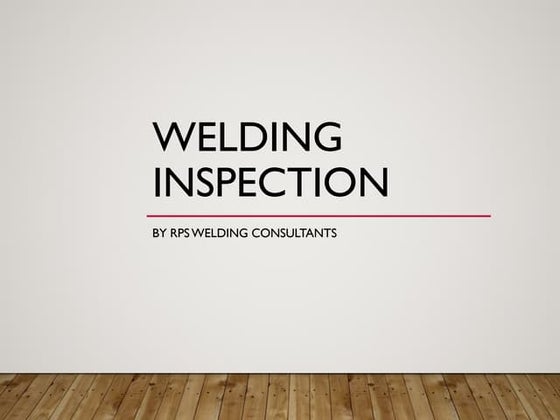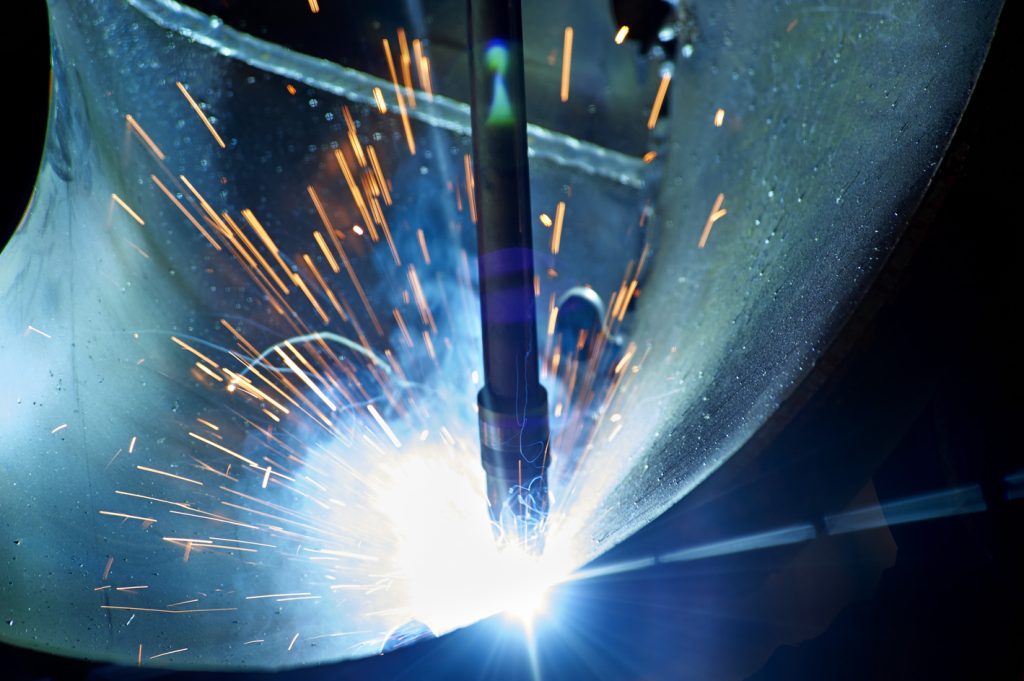Reputable Welding Inspection Gilbert Arizona: Secret Elements to Think About for Optimal Outcomes
Reputable Welding Inspection Gilbert Arizona: Secret Elements to Think About for Optimal Outcomes
Blog Article
A Comprehensive Guide to Welding Evaluation: Understanding Specifications, Techniques, and Ideal Practices for Quality Assurance

Welding examination plays a critical duty in making certain the structural honesty and safety of bonded elements, requiring an extensive understanding of industry standards such as those established by AWS and ASME. Different examination methods, consisting of ultrasonic and aesthetic testing, are used to identify possible flaws that can jeopardize quality. Applying best practices can substantially enhance operational reliability and foster trust amongst customers. Welding Inspection Gilbert Arizona. As we check out these essential elements, it comes to be obvious that the implications of welding assessment extend much past compliance, inviting a better examination of just how these procedures form sector requirements and methods.
Value of Welding Evaluation
Welding examination plays a crucial function in guaranteeing the honesty and safety of bonded structures. It is an essential process that confirms that welds comply with predefined specifications, which is important in numerous sectors, consisting of construction, auto, and aerospace. By carrying out extensive assessments, possible defects such as splits, incomplete blend, and porosity can be identified early, stopping devastating failures that can cause accidents or costly fixings.
The relevance of welding examination extends beyond mere conformity with guidelines; it additionally fosters count on with stakeholders. Clients and regulatory bodies anticipate guarantee that the frameworks they count on are built to withstand operational tensions. Furthermore, efficient welding examination practices add to long-lasting durability and performance of the structures, eventually causing minimized maintenance prices.
Additionally, welding examination promotes a culture of high quality within organizations, motivating adherence to ideal techniques and continual improvement. By integrating assessment procedures right into the welding workflow, firms can enhance their reputation and establish themselves as leaders in quality control. Finally, the importance of welding inspection hinges on its capacity to safeguard lives, make sure structural dependability, and support industry requirements, making it an important element of welding procedures.
Secret Sector Requirements
Guaranteeing compliance with essential industry requirements is crucial for maintaining the top quality and safety of welded structures. Numerous organizations develop these standards to advertise best methods in welding and evaluation. Amongst the most acknowledged are the American Welding Society (AWS) and the American Culture of Mechanical Engineers (ASME), which give in-depth standards and specifications for welding procedures and inspection requirements.
AWS standards, such as AWS D1.1 for structural welding, rundown requirements for materials, layout, and testing to make sure the honesty of welds. ASME codes, consisting of ASME Area IX, govern the certification of welders and welding treatments, making certain consistent top quality in commercial applications. Internationally, the ISO 3834 basic highlights top quality requirements for fusion welding, offering a structure for companies to show compliance with global best methods.
Compliance with these requirements not only improves the dependability of welded structures yet additionally reduces dangers related to structural failures. Furthermore, adherence to industry criteria is usually a prerequisite for regulatory authorizations and can significantly affect project requirements. Inevitably, understanding and applying these vital requirements are necessary for efficient welding evaluation and quality control.
Examination Techniques Review
Efficient welding evaluation relies upon a variety of techniques made to analyze the high quality and integrity of welds. These techniques can be generally classified into non-destructive and harmful testing (NDT) techniques. Non-destructive testing techniques, which are commonly chosen in the industry, enable the assessment of welds without jeopardizing the integrity of the product.
Among the most typically made use of NDT techniques are visual examination, ultrasonic testing, radiographic testing, and magnetic fragment testing. Aesthetic inspection is commonly the first step in the analysis procedure, enabling inspectors to identify surface imperfections and analyze weld grain accounts.
Each strategy has its very own benefits and constraints, making it important for examiners to pick the most suitable approach based on the particular demands of the job, the products included, and the urgency of the welds being inspected. This careful choice maintains and makes sure thorough analyses safety and security and quality standards in welding operations.

Usual Flaws and Their Ramifications
A thorough understanding of common issues in welds is crucial for keeping architectural integrity and safety and security in bonded constructions. Welding defects can significantly compromise the mechanical residential or commercial properties of the joint, causing failings that could threaten both personnel and devices.
Common flaws include porosity, which materializes as little gas pockets trapped in have a peek at these guys the weld steel, damaging the total structure. Splitting is one more prevalent concern, usually arising from quick cooling or incorrect joint style, resulting in stress concentrations that can result in catastrophic failings. Incomplete fusion takes place when the weld steel falls short to appropriately bond with the base material, creating weak factors that may lead to splitting up under load.
Other remarkable problems consist of undercutting, where the weld grain deteriorates the base metal, and slag incorporations, which can hinder the weld's stamina. Each of these defects has particular implications; for circumstances, porosity can reduce ductility, while splitting straight affects tensile stamina. Recognizing and comprehending these flaws throughout evaluation is crucial for ensuring and carrying out rehabilitative measures compliance with market criteria, inevitably safeguarding the structural stability of bonded settings up.
Best Practices for High Quality Guarantee
Applying best practices for quality control in welding procedures is important for accomplishing ideal outcomes and decreasing defects. One essential method is the facility of clear welding treatments that stick to sector standards and specifications. These procedures should include detailed instructions concerning material option, joint prep work, and welding strategies to make certain uniformity and quality.
Normal training and certification of welding personnel are also vital. Competent welders who comprehend the significance of quality control are most likely to produce sound welds. Additionally, executing go to this site a durable evaluation program, including both non-destructive and aesthetic screening (NDT), can help recognize issues early in the procedure, permitting timely corrective activities.
Documents plays a crucial function in high quality assurance. Preserving accurate documents of welding assessments, repair work, and criteria ensures traceability and responsibility. Employing innovative technologies such as automated welding equipments can enhance accuracy and reduce the capacity for human mistake.
Lastly, promoting a society of quality within the company motivates staff members to prioritize high quality in their job. By sticking to these best methods, companies can enhance the stability of their welding procedures, ultimately causing improved product high quality and lowered costs connected with rework and fixings.

Conclusion
In verdict, welding examination plays an important function in making certain the honesty and security of welded structures. By implementing best techniques, companies can improve dependability, reduce maintenance costs, and grow trust among customers, inevitably contributing to successful welding operations.
In addition, welding examination advertises a culture of Visit Website quality within companies, motivating adherence to finest practices and continual renovation. In conclusion, the importance of welding inspection exists in its capacity to protect lives, guarantee architectural integrity, and support industry criteria, making it an important aspect of welding procedures.
Amongst the most recognized are the American Welding Culture (AWS) and the American Society of Mechanical Designers (ASME), which provide thorough guidelines and requirements for welding processes and inspection requirements.
Ultimately, understanding and carrying out these essential criteria are important for reliable welding evaluation and top quality guarantee.
Effective welding assessment depends on a selection of methods designed to evaluate the top quality and stability of welds. - Welding Inspection Gilbert Arizona
Report this page